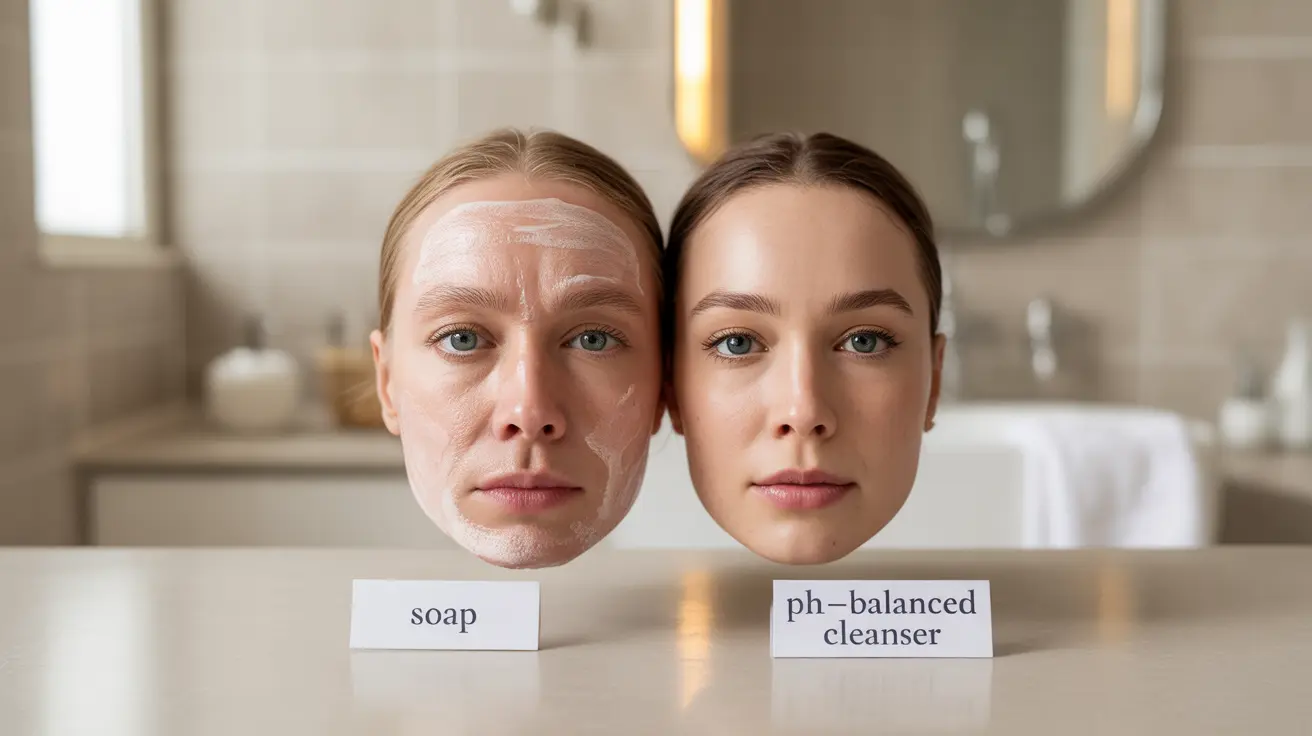When it comes to skincare, one of the most common questions people ask is whether regular soap is good for their face. While soap has been a traditional cleansing method for centuries, modern dermatological research suggests that not all soaps are created equal, especially when it comes to facial care.
Understanding how different types of cleansers affect your facial skin is crucial for maintaining a healthy complexion. Let's explore the facts about using soap on your face and what you should know to make informed skincare decisions.
Understanding Traditional Bar Soaps
Traditional bar soaps are typically made with harsh surfactants and have a high pH level, which can disrupt your skin's natural barrier. This disruption often leads to various skin concerns:
- Stripped natural oils
- Disrupted pH balance
- Compromised skin barrier
- Increased sensitivity
- Potential bacterial imbalance
The facial skin is more delicate and sensitive than the skin on your body, making it particularly vulnerable to the harsh effects of regular bar soap.
The Impact of Soap pH on Facial Skin
Your skin naturally maintains a slightly acidic pH of around 5.5. Traditional bar soaps often have an alkaline pH of 9-10, which can:
- Alter your skin's protective acid mantle
- Lead to increased dryness and irritation
- Cause excessive oil production as skin tries to compensate
- Potentially worsen existing skin conditions
Choosing the Right Facial Cleanser
If you're considering using bar soap on your face, look for products specifically formulated for facial use with these characteristics:
- pH-balanced (around 5.5)
- Gentle, non-stripping surfactants
- Hydrating ingredients like glycerin or hyaluronic acid
- Free from harsh fragrances and dyes
- Contains skin-nourishing ingredients
Better Alternatives to Traditional Bar Soap
Several alternatives can provide better cleansing results for facial skin:
- Gentle cream cleansers
- Foaming facial washes
- Micellar water
- Oil-based cleansers
- Syndet bars (synthetic detergent bars)
Proper Facial Cleansing Technique
Regardless of the cleanser you choose, proper technique is essential:
- Use lukewarm (not hot) water
- Cleanse for 30-60 seconds
- Apply gentle circular motions
- Avoid harsh scrubbing
- Rinse thoroughly
- Pat dry with a clean towel
Frequently Asked Questions
- Is it safe to use regular bar soap on your face without causing dryness or irritation?
Regular bar soap is generally not safe for facial use as it can cause significant dryness and irritation. The high pH and harsh surfactants in traditional bar soaps can disrupt your skin's natural barrier and lead to various skin issues.
- What ingredients should I look for in a bar soap that is suitable for facial skin?
Look for gentle, pH-balanced bar soaps containing moisturizing ingredients like glycerin, ceramides, or hyaluronic acid. Avoid harsh surfactants, artificial fragrances, and dyes. Consider syndet bars specifically formulated for facial use.
- Why do traditional bar soaps often cause redness, breakouts, or damage to facial skin?
Traditional bar soaps can damage facial skin due to their alkaline pH, harsh surfactants, and ability to strip natural oils. This disruption can lead to inflammation, overproduction of oil, and compromised skin barrier function, resulting in redness and breakouts.
- Are there better alternatives to bar soap for cleansing the face, especially for sensitive or acne-prone skin?
Yes, there are several better alternatives including gentle cream cleansers, foaming facial washes, micellar water, and oil-based cleansers. These products are typically formulated with skin-friendly ingredients and maintain proper pH balance.
- How can I properly care for my skin after washing my face with a bar soap designed for the face?
After cleansing, immediately apply a moisturizer to lock in hydration. Use products containing ingredients like hyaluronic acid, ceramides, or glycerin. Follow with sunscreen during the day, and consider using a more nourishing night cream in the evening.




